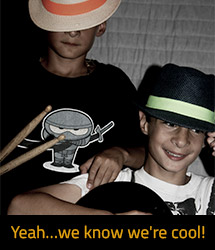…surround yourself with great musicians and engineers!
We just had two wonderful sessions with some great musical talent: Chico Huff on bass and Vic Stevens on drums.
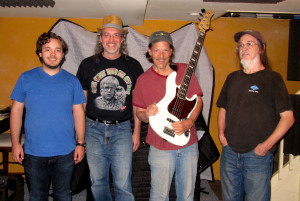
The days were long. There were numerous challenges. But pre-production and preparation were key in achieving excellent results.
For Every Studio Session, Only One Musician
After years of recording, I’ve found that working with the same musician on several songs over the course of a day is far more efficient and effective than having multiple musicians recording on the same song in one session.
For one, you don’t have to consume a lot of time changing the recording set up, including microphones, settings in your DAW (digital audio workstation) and monitors when a different musician needs to record.
But perhaps most importantly, when you record just one musician, you can focus on the music and the performance. So many times you’re distracted by the mechanics of a recording session that you fail to mind the aesthetics. In the end, it’s the performance that’s ultimately compromised.
You overlook the arrangement. You don’t communicate certain accents to be played by the musician. All these nuances get lost by the necessity to change the microphones, alter the monitoring or reroute the signals to your DAW when you have to switch from one musician to another. Again, all this shit eats up time, energy and your music suffers. It’s best, from my experience, to work with one musician on several songs, instead of several musicians on one song, over the course of a session.
Pre-Production is a Necessary Evil
The last thing I want to be doing is bouncing tracks, let alone routing and naming channels for an upcoming studio session. But you know what? That brain suck pays dividends!
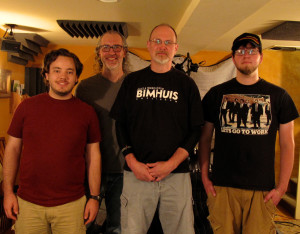
On the day we record, I’m ready to focus on the music and the musician’s performance. I’m not obsessing with the mechanics of the session or rushing due to a lack of preparation. Everything is in place, and in about an hour after the musician’s arrival, we’ll have everything set up, ready to make music!
One of the most useful tasks in preparing for a studio session is to make a list of all the things you wish to accomplish and delegate it to an assistant. From taking pictures and movies, to upload later to YouTube or your website, to changing the speaker cabinets or microphones to get a different sound, these can all be handled by your assistant so you can hyperfocus on your music. (By the way, Nick DiCecco and Jordan Rhode did a great job assisting these recording sessions!)
Believe me, you simply can’t keep track of everything. The mark of a great manager and engineer is the willingness and necessity to delegate.
Great Musicians & Engineers Make for a Great Recording
When you surround yourself with great musicians like Chico Huff on bass and Vic Stevens on drums, plus great engineers like David Ivory and Chris Gately, they take your project to the next level.
Music is a multi-disciplinarian endeavor and requires many people with specialized skills. Bands like U2 and The Beatles did not become great solely by themselves. It was their teams comprising of some of the greatest engineers like George Martin, Brian Eno, Flood, Steve Lilywhite and others, who raised their game by their skills and perhaps mere presence.
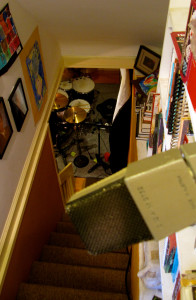
One of the great contributions during the drum session came from Chris Gately building on David Ivory’s use of our stairwell during the Chuck Treece recording sessions in April 2015. Since Great Egg Studio is in a basement, height is NOT one of its endearing qualities. To compensate, we’ve positioned the drums near the stairwell, where we set up an AKG C12 microphone at the top of the stairs to give the kit more life.
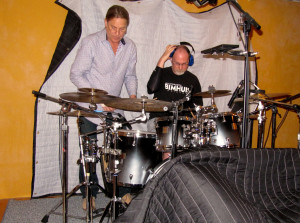
David used our Klark-Teknik DN500 compressor/expander to crush the signal hard to achieve a real fat sound. But Chris suggested that we open the basement door and put the C12 in a figure-8 pattern to pick up the drums reverberating throughout the building in order to get an even bigger sound. Well the results were rather predictable…totally awesome!
Again it’s just one of many examples to surround yourself with great talent. It raises your game and opens the (basement) doors of sonic perception.

